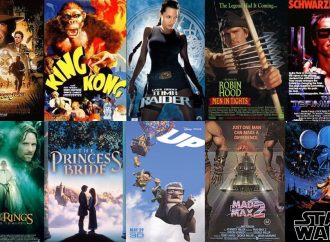The Federal Reserve has a plethora of tools it can use to influence the US economy. Currently, they focus on using changes in interest rates and quantitative easing measures as their primary means of monetary policy. But with the pandemic pushing economies into uncharted territory, central banks are turning to new methods to try and
The Federal Reserve has a plethora of tools it can use to influence the US economy. Currently, they focus on using changes in interest rates and quantitative easing measures as their primary means of monetary policy. But with the pandemic pushing economies into uncharted territory, central banks are turning to new methods to try and stabilize their economies. One tool in particular — forward guidance — is becoming increasingly popular as the go-to method for controlling inflation and boosting economic growth. This blog post will explain what forward guidance is, how it works, and why it’s become so important for central bankers.
What is quantitative easing?
Quantitative easing is a monetary policy tool that central banks use to stimulate the economy by increasing the money supply. When the economy is struggling, quantitative easing can help to increase lending and investment, and boost economic growth.
During quantitative easing, the central bank creates new money and uses it to purchase financial assets from commercial banks and other financial institutions. This increases the amount of money in circulation and makes it easier for banks to lend money to businesses and consumers.
Quantitative easing is usually used when interest rates are already at or near zero, and traditional monetary policy tools are no longer effective. The U.S. Federal Reserve has used quantitative easing three times since the 2008 financial crisis: from November 2008 to March 2010, September 2010 to June 2011, and December 2012 to December 2015.
The Fed’s most recent round of quantitative easing was announced in September 2019 in response to concerns about the global economy. The Fed said it would begin buying $60 billion in Treasury bills each month, in addition to the $20 billion per month it was already purchasing in mortgage-backed securities. This increase in asset purchases is intended to lower interest rates and spur economic activity.
How does quantitative easing work?
When the Federal Reserve wants to stimulate the economy, it typically does so by cutting interest rates. But what if interest rates are already low, as they are now? Then the Fed turns to quantitative easing, or QE.
The idea behind QE is simple: The Fed buys bonds from banks and other financial institutions, using money that it creates out of thin air. In return, those institutions have more cash on hand, which they can use to lend or invest. The hope is that this extra cash will help spur economic activity and boost inflation back to healthy levels.
There are a few different ways the Fed can buy bonds under QE. One is through asset-backed securities (ABS), which are bundles of loans like mortgages or credit card debt. The Fed has also bought Treasury bonds outright. And in late 2019, the Fed started buying corporate bonds for the first time ever as part of its QE program.
Critics of QE argue that it amounts to printing money and will eventually lead to inflation spiraling out of control. But so far there’s little evidence that this has happened in the U.S., even after several rounds of bond buying by the Fed.
What are the benefits of quantitative easing?
Quantitative easing (QE) is a monetary policy whereby a central bank purchases government securities or other securities from the market in order to increase the money supply and encourage lending and investment.
The main objectives of quantitative easing are to combat deflationary pressures in the economy, to promote economic growth, and to stabilize financial markets. QE can be an effective tool for achieving these objectives, but it is not without its risks.
Quantitative easing can help increase aggregate demand in the economy by increasing the money supply and lowering interest rates. This can lead to higher levels of output and employment. It can also help promote economic growth by encouraging lending and investment.
However, quantitative easing is not without its risks. One risk is that it could lead to inflation if the money supply increases too rapidly. Another risk is that it could create asset bubbles if it leads to excessive speculative investment.
Who does quantitative easing help?
Quantitative easing is a process by which a central bank injects money into the economy by buying government bonds or other financial assets. The goal is to lower interest rates and increase the money supply in order to stimulate economic activity.
Many economists believe that quantitative easing has played a significant role in preventing a global economic collapse following the 2008 financial crisis. By pumping money into the economy, central banks were able to keep interest rates low and encourage lending and investment. This helped to prevent a complete meltdown of the global financial system.
While quantitative easing has been praised for its role in stabilizing the economy, it is not without its critics. Some argue that quantitative easing simply delays the inevitable pain that comes with an economic downturn. Others believe that it creates artificial bubbles in asset prices that will eventually lead to another financial crisis.
Whether you believe that quantitative easing is good or bad for the economy, there is no denying that it has become an important tool for central banks around the world. In times of economic uncertainty, quantitative easing can provide a much-needed boost to confidence and spending.
Does quantitative easing have any drawbacks?
Quantitative easing may have some drawbacks, as it can lead to inflationary pressures and asset bubbles. Additionally, it may be difficult to unwind quantitative easing once it has been implemented, which could lead to further economic imbalances.
How long can quantitative easing continue?
Quantitative easing (QE) is an unconventional monetary policy in which a central bank purchases government bonds or other assets to inject money into the economy and increase liquidity. The goal of quantitative easing is to lower interest rates and spur economic activity.
In recent years, many central banks have turned to quantitative easing as a way to stimulate their economies. The U.S. Federal Reserve, the Bank of Japan, and the European Central Bank have all engaged in quantitative easing at various points since the global financial crisis of 2008-2009.
There is no set timeframe for quantitative easing, and it can be continued for as long as the central bank feels it is necessary. However, there are some limitations to how long quantitative easing can be used. For example, if asset prices become too inflated, it could lead to an economic bubble that eventually bursts. Additionally, QE cannot be continued indefinitely because at some point the central bank will reach the limit of how many assets it can purchase without causing inflationary pressures.
Overall, quantitative easing is a powerful tool that can be used to stimulate an economy. However, it is important for central banks to be mindful of potential risks and limitations when using this policy measure.
Conclusion
Central banks have long understood the effectiveness of asset purchases, but today this tool is becoming the king of monetary policy. Thanks to quantitative easing and forward guidance, central bankers are now able to use their balance sheets more dynamically in order to support economic growth and stability. This shift in monetary policy has enabled governments around the world to better manage their economies during times of turbulence. It’s a powerful tool that may just prove its worth through successful economic outcomes over time.





















Leave a Comment
Your email address will not be published. Required fields are marked with *